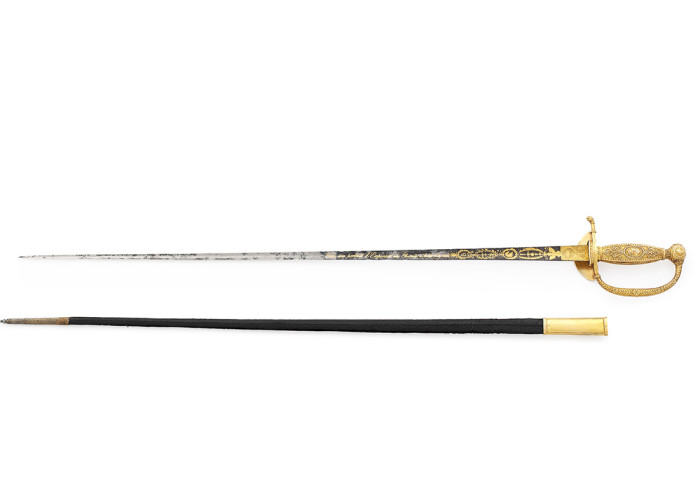Napoleon’s Austerlitz Sword
This beautifully decorated sword was carried by Napoleon at the Battle of Austerlitz, on 2 December 1805. In this decisive victory, the French forces annihilated a combined Austrian and Russian force sent to destroy the upstart Bonaparte.
Victory at Austerlitz allowed Napoleon to dominate Europe, opposed only by Britain. 10 years after Austerlitz, at the Battle of Waterloo, Napoleon suffered his own crushing defeat, finally ending his incredible military career.
The battle of Austerlitz is sometimes called the battle of the three Emperors, as the rulers of Russia, Austria and Prussia were all present on the battlefield. Napoleon’s victory at Austerlitz went a long way towards masking the defeat suffered by the French Navy at Trafalgar in October of the same year. Trafalgar gave the Royal Navy mastery of the seas but Austerlitz showed that Napoleon still dominated much of central Europe.
The sword was made for Napoleon at the end of the Consulate period (1803 – 1804) for Napoleon by the famous goldsmith Martin Guillaume Bienais of Paris. Napoleon always referred to it as “my sword” and although he owned many swords, it is this one that is most associated with him.
The hilt (handle) is of solid gold chased with scrolling foliage and a portrait of Napoleon in profile. The top of the steel blade has been decorated with foliage in gold against the brilliant blue background of blued steel. The blade was heated over burning charcoal and after a time its silvery colour turned to a bright blue. The gold leaves were painted on in a mixture of finely powdered gold and mercury which was then put in a kiln where the heat burnt off the mercury, leaving the brilliant gold design behind. The process was called “fire gilding”. The men who did it rarely lived past 40 as the mercury fumes were highly poisonous.
This sword was never meant to be used for fighting although its sharply pointed blade could give a nasty wound. Instead it was a symbol of Napoleon’s rank as the supreme commander of the Grande Armée. Throughout the ages powerful men have worn highly decorated swords which symbolised not only their political power but which told the world that they were warriors too. The fact that the sword is decorated with Napoleon’s own portrait showed that he had a huge amount of self esteem and was confident of his own abilities.
-
Curatorial info
- Originating Museum: Musée de l'Armée
- Production Date: 1803
- Creator: Martin-Guillaume Biennais
- Material: Gold, blued steel
- Creation Place: Versailles
- Size: Width: 10.8 cm; Length: 87cm
-
Use this image
You can download and use the high resolution image for use in a non-profit environment such as a school or college, but please take note of the license type and rights holder information below
- Rights Holder: Copyright Musée de l'Armée. Photography Relic Imaging Ltd.
- License Type: Creative Commons
Find it here
This object is in the collection of Musée de l’Armée







